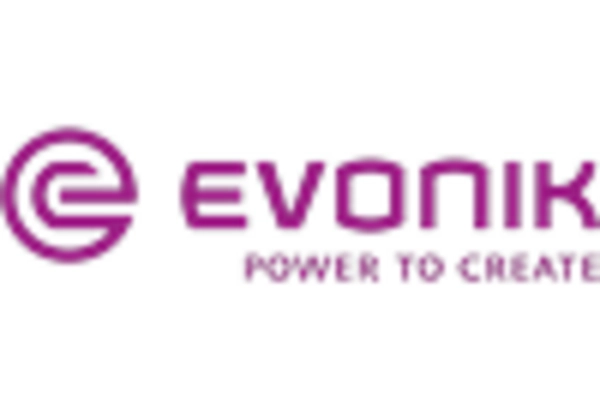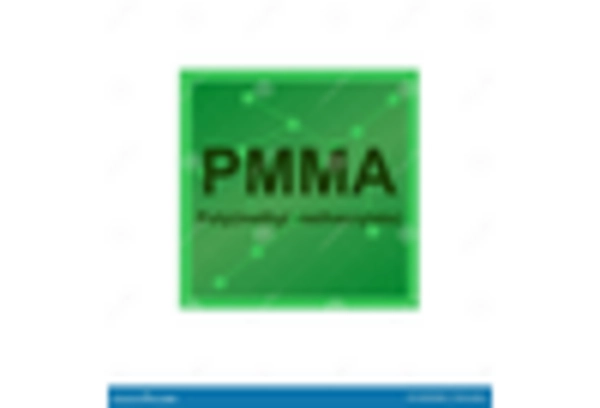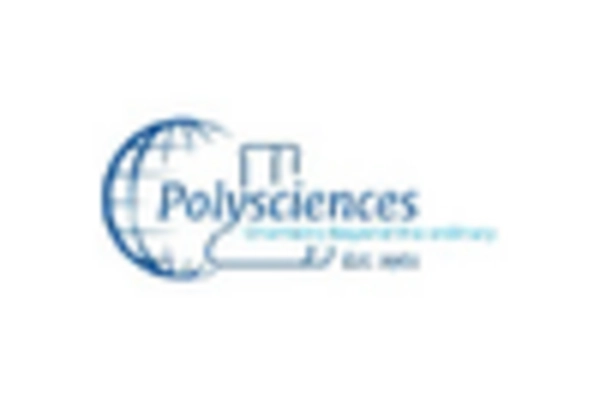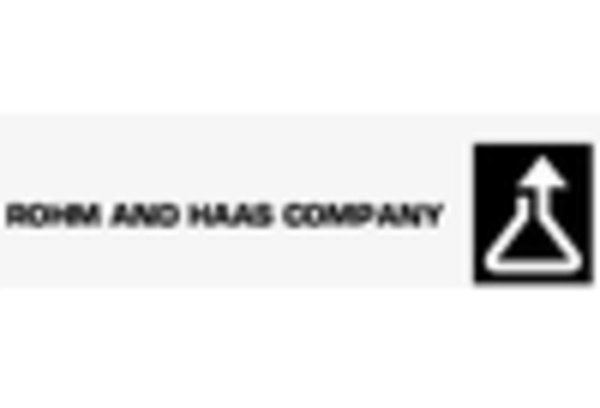Growing Geriatric Population
The demographic shift towards an aging population is a significant driver for the Healthcare PMMA Market. As the global population ages, there is an increasing prevalence of age-related health issues, necessitating the use of medical devices and implants that utilize PMMA. For instance, orthopedic applications, such as bone cement, are critical for elderly patients undergoing joint replacement surgeries. Data suggests that the number of hip and knee replacement surgeries is expected to rise substantially, with millions of procedures anticipated annually. This trend underscores the importance of PMMA in providing effective solutions for the geriatric demographic. Consequently, the Healthcare PMMA Market is poised for growth as it adapts to the needs of this expanding patient population.
Rising Demand for Aesthetic Procedures
The increasing popularity of aesthetic procedures is a notable driver for the Healthcare PMMA Market. As consumers become more conscious of their appearance, the demand for non-surgical cosmetic enhancements, such as dermal fillers, has surged. PMMA, known for its biocompatibility and durability, is increasingly utilized in these applications. Reports indicate that the aesthetic medicine market is projected to grow at a compound annual growth rate (CAGR) of approximately 10% over the next few years. This trend suggests a robust market for PMMA-based products, as they offer long-lasting results and minimal recovery time, appealing to a wide demographic. Consequently, the Healthcare PMMA Market is likely to experience significant growth driven by this rising demand.
Technological Innovations in Material Science
Technological advancements in material science are propelling the Healthcare PMMA Market forward. Innovations in polymer chemistry have led to the development of advanced PMMA formulations that enhance performance characteristics, such as increased strength and reduced weight. These improvements are particularly relevant in the production of medical devices and implants, where material integrity is paramount. Furthermore, the integration of smart technologies into PMMA products, such as drug delivery systems, is emerging as a key trend. The market for smart medical devices is expected to expand, potentially reaching a valuation of several billion dollars in the coming years. This evolution in technology indicates a promising future for the Healthcare PMMA Market, as manufacturers seek to leverage these advancements to meet evolving healthcare needs.
Increased Investment in Healthcare Infrastructure
Investment in healthcare infrastructure is a pivotal driver for the Healthcare PMMA Market. Governments and private entities are allocating substantial resources to enhance healthcare facilities, particularly in emerging markets. This investment often includes the procurement of advanced medical devices and materials, including PMMA-based products. The expansion of healthcare infrastructure is expected to create a favorable environment for the adoption of innovative medical technologies. Reports indicate that healthcare spending is projected to rise significantly, with billions earmarked for upgrading facilities and equipment. This trend suggests a robust demand for PMMA in various applications, thereby propelling the growth of the Healthcare PMMA Market.
Regulatory Support for Advanced Medical Solutions
Regulatory frameworks are increasingly supportive of innovative medical solutions, which serves as a catalyst for the Healthcare PMMA Market. Authorities are streamlining approval processes for new medical devices, including those utilizing PMMA, to encourage innovation and improve patient outcomes. This regulatory environment fosters the development of advanced PMMA applications, such as drug-eluting implants and customized prosthetics. The potential for expedited approvals may lead to a surge in product launches, enhancing market competition and diversity. As a result, the Healthcare PMMA Market is likely to benefit from a more dynamic landscape, where manufacturers can introduce cutting-edge solutions that address specific healthcare challenges.



















Leave a Comment